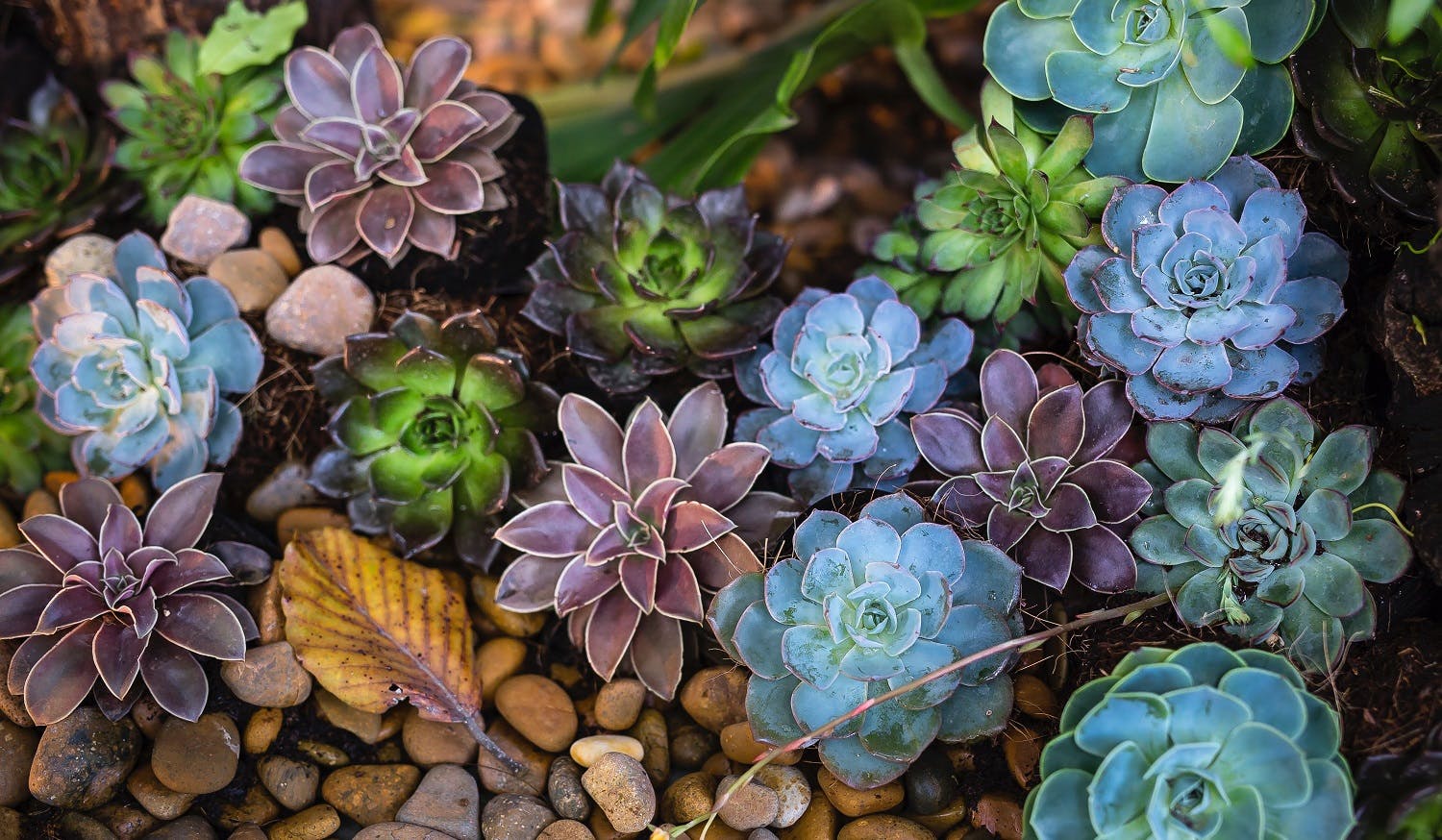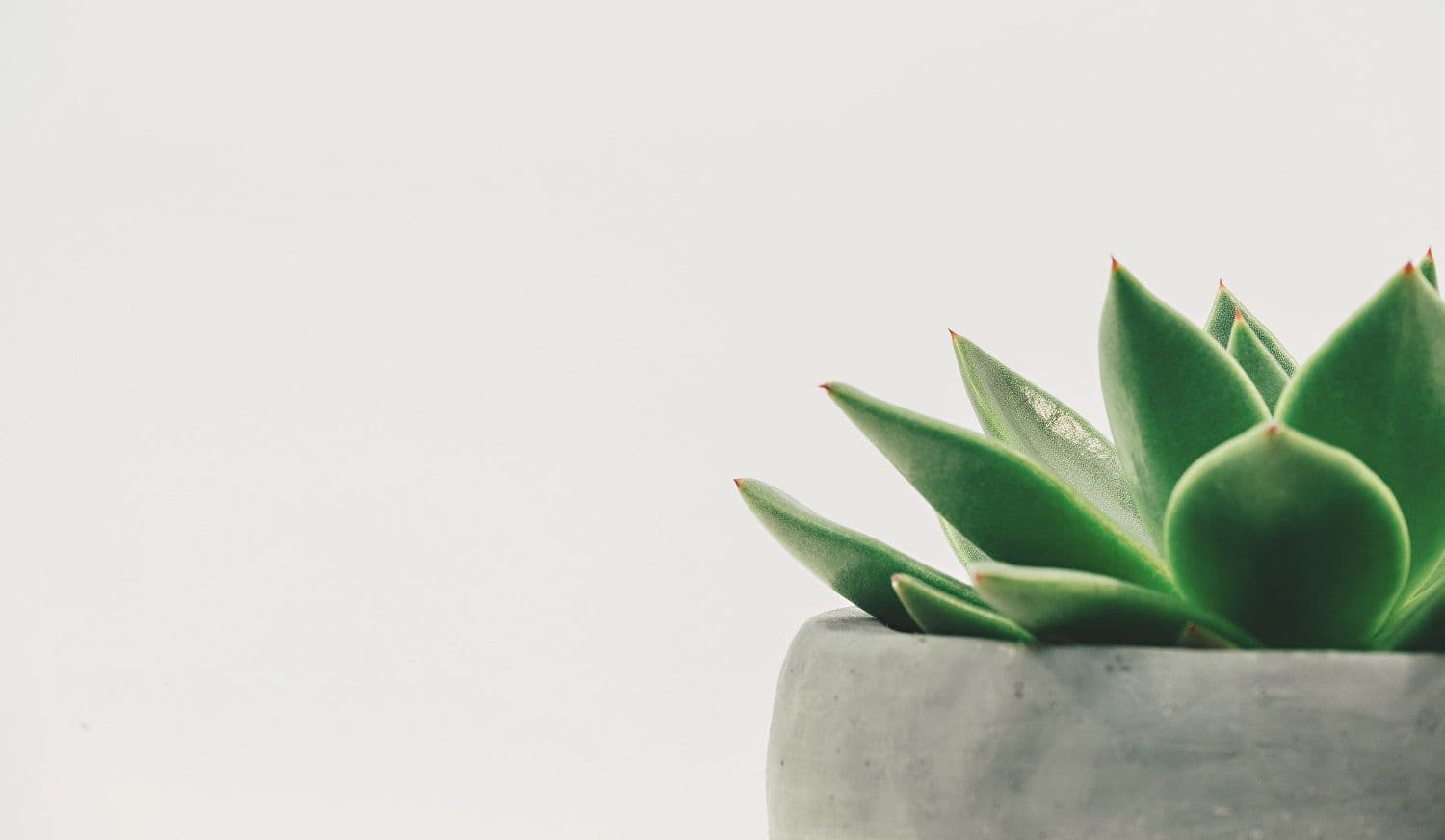The Origin of Succulents
The Latin term "sucus", which means liquid, juice, and sap, is where the word "succulent" first appeared. Succulents live up to their name because their water-retentive leaves and stems can withstand drought. Because of their adaptability and capacity for endurance, these hardy desert dwellers make excellent houseplants, albeit certain species thrive indoors more than others.
Most species of succulents require a lot of light, and some homes don't have enough of it to maintain some of them. Depending on the amount of light in your home, green succulents typically thrive indoors more than multicolored ones. To the best of your abilities, attempt to mimic this environment since it directly correlates with their care requirements.

How to Care for Succulent Plants
A wide category of plants known as succulents have thick, fleshy leaves and water-storing stems. They are frequently thought of as the ideal low-maintenance plant. There are things we can all learn to better care for these little houseplants, whether you're new to succulents or a devoted fan. To assist you learn the best maintenance techniques for your succulents, we put up this in-depth guide.
Why Are Succulents Important?
Due to their attractive exteriors and low maintenance needs, succulents are currently one of the most fashionable indoor plants. But aside from being fantastic home décor, succulents have a ton of other uses and advantages that are less often known. Succulents are excellent mostly because they require only a single watering every two to three weeks. Succulents are great in purifying the air and getting rid of pollutants, like snake plants and aloe vera. Through photosynthesis, they can also release clean oxygen into the atmosphere. Succulents also have the added benefit of bringing vitality to any indoor or outdoor setting, simulating being in the great outdoors.
Steps To Care for Succulent Plants
The key to properly caring for and producing succulents is to mimic the circumstances of their natural environments, which are typically warm, arid, and receive little rainfall. Succulents may not need much attention, but they do need a few essentials to survive, let's take a look at that.
1. Watch Their Temperature
Succulents typically favor a temperate climate with temperatures between 60 and 80 °F. Others can withstand temperatures as high as 90°F or as low as 40°F. These sweltering conditions are occasionally used by gardeners to "stress" their succulents into changing color. Many succulents, especially soft succulents, can sometimes benefit from high temperatures between 80°F and 90°F in order to keep their vivid hues. A lot of hues will start to deepen when the temperature drops (but stays above 40°F). The chilly (but not freezing) temperatures over a prolonged period of time intensify these colors. Be mindful that your succulents can suffer from temperatures that are too high or too low. It is never advised to go below 40°F or to go above 90°F.
2. Keep Them Well-Fed
The quickest way to kill a succulent is with excessive TLC and water. In contrast to common houseplants, they store water in their leaves or roots, acting as a reservoir to quench the plant's thirst. Water only enough to protect leaves from wilting to avoid overwatering.
Shrinkage, puckering, or generally glossy leaves that appear drab are signs that a plant needs hydration. Make sure the soil is dry by sticking your finger two knuckles deep into it if you think it's ready to water. Apply enough water to the area to cause drainage holes to overflow. Drain the drainage saucer to prevent plants from spending the night in water. 95% of indoor plants require the soil to almost totally dry out before watering.
3. Rotate the Pots
This favor filtered, diffused, and early light. There may just be one side of your succulent that gets enough of this indirect light if you leave it in the same spot every day. Succulents may rotate so that all sides of the plant receive light. They remain healthy by doing this, and it also benefits their appearance. By twisting it, you can prevent it from bending toward the sun like other succulents do. If you observe your succulent bending or stretching toward the sun, this may indicate that you haven't put them in the ideal location in your house.
4. Use the Right Soil
There are many competing theories regarding soil, however, drainage is crucial for succulents. Every soil mixture contains both organic and mineral components. Mineral matter, such as clay, silt, and sand, support soil drainage, whereas organic matter, such as humus and decomposing plant tissue, serves to retain moisture in the soil and give nutrients to the plant.
Because succulents can withstand drought and don't require constant watering, their potting soil should be permeable, well-draining, and contain less organic matter than typical indoor soil mixtures. Ideal soil is a loose, granular mixture with a good amount of sand and perlite or pumice.
5. Keep Away Pests
It is said that prevention is always better than treatment. Here are a few quick techniques to reduce insect growth and make your succulents unattractive:
- You should quarantine a new plant for at least two weeks as soon as you receive it. Set it back at least two yards from the closest plant (but be sure it has enough light). By doing this, any pests that are already there won't spread to other plants.
- Most pests prefer warm, dark, wet settings. You won't frequently encounter pest issues if you keep your plant in a dry, bright area with lots of airflow. Succulents prefer that kind of habitat, after all. Win-win!
- Pests can be avoided by maintaining a clean and organized appearance in the plant containers. Regularly trim, prune and clean the pot of any dead plant materials.
- Dead leaves should not be left in the soil because doing so will just give pests a place to hide and food for their larvae. Not to mention that decaying matter retains a great deal of moisture, the exact opposite of what we want.
Shop Plant Indoor Pesticide Now
6. Maintain the Leaves
Maintain the natural shine and cleanliness of your succulents' leaves—because plants should appear like plants, not plastic.
First and foremost, we do not advise using leaf-shining products on your houseplants. There are numerous commercial plant shine products on the market, and many stores utilize them to enhance the appearance of their plants. However, leaf shine products can cause more harm than good.
Wring off any extra water from your cloth (or sponge). Place one hand softly below each leaf and wipe down the top of the leaf with your other hand, going away from the stem. Repeat on the underside of the leaf, where most houseplant pests prefer to hide. Use a gentle brush to clean fragile or small leaves.
Closing
Succulent care can help these small indoor plants not only survive, but thrive. They're known for being easy to care for, but that doesn't make them invulnerable. Give them enough light, keep them watered and fed, monitor the temperature, rotate your pots, keep pests at bay, use the correct soil, and inspect the leaves are the general rules for growing top-quality succulents.
Keeping these parameters provides your succulent the finest care. Most importantly, remember that you are attempting to mimic your plant's natural habitat when caring for it!
For more information, talk to one of our Plant care Mavyns and get customized advice by submitting a request through our Mavyn website.
